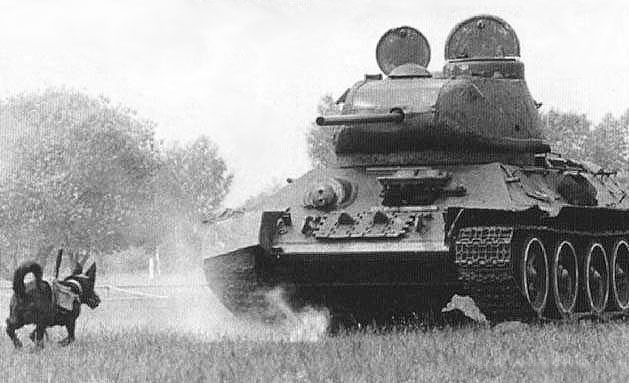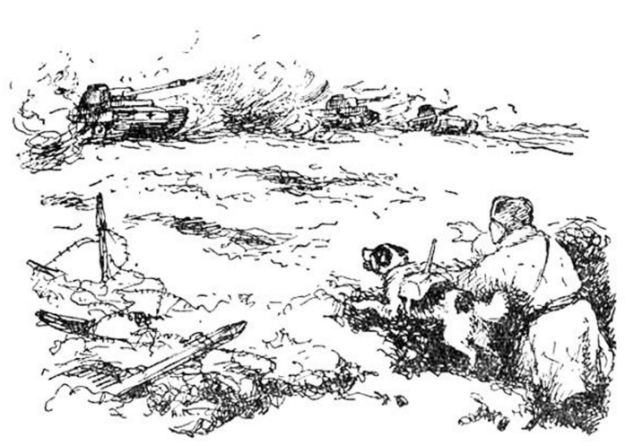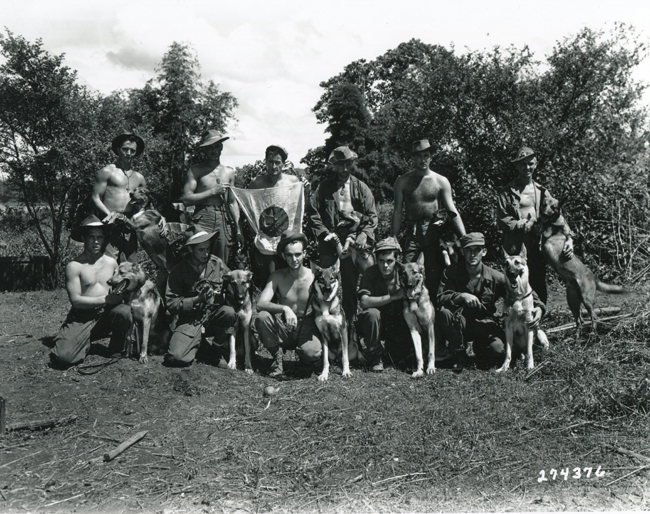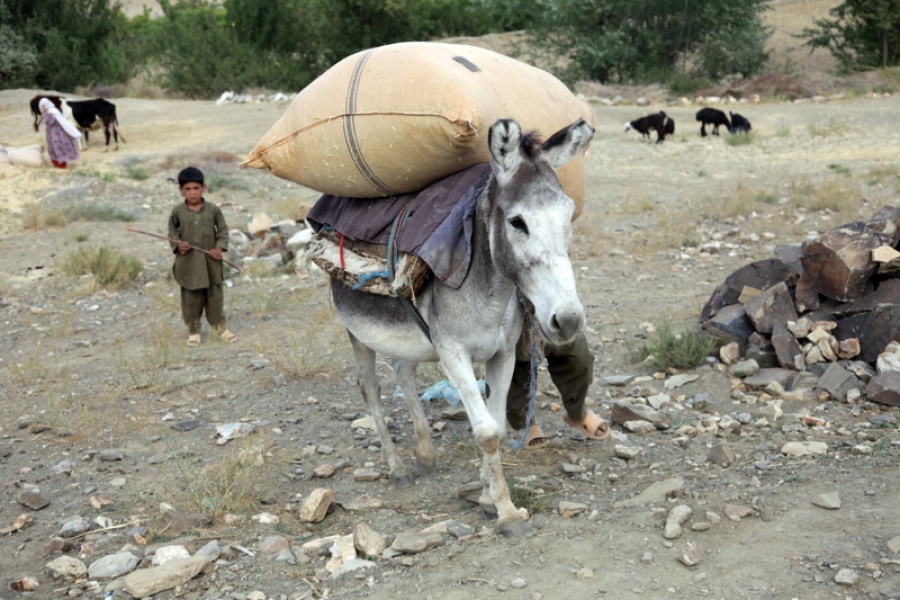Let’s get this out right away. This is not history for the faint of heart. If you are sensitive to stories, which include harm to animals, you should read this blog on John Hughes films instead. There’s no mention of dogs or explosives in that one. If you can accept that humans have done some of the worst and best things on this planet, read on.
Many historians love to talk about the Russians and their failed war tactics with dogs trained to bomb the Germans. What they don’t often tell you is that the Russians were not alone in that pursuit.
It’s true. After some success using dogs in a utilitarian manner to move supplies and protect soldiers, the Russians explored the option of using the dogs for moving explosives. It’s also true that the Japanese, Americans, and Iraqi insurgents did the same.
All failed.
Russians

(source: todayifoundout.com)
The first time Russians approved dogs for military purposes was in 1924. They were to assist with rescue efforts, but also the delivery of first aid and food, facilitate communication, find mines and soldiers.
In these ways, the dogs were effective. In fact, in Moscow, the Russians opened twelve dog training schools for this purpose. In a twist of irony, they were training German Shepherds, which they would use against the Germans.
In the ’30s some schools began teaching the dogs to carry mobile mines, bombs they fitted to the dogs. The dogs would release those bombs near the target so they could return to the handler for another go.
The program failed more ways than it succeeded. For starters, they trained the dogs using Russian tanks as targets. The trainer would keep the dogs hungry, then put food under the tanks to motive them. They even escalated the training so that the tank could be running with gunfire in the air, so they knew the dogs would not flee during battle.
By the time the (now) Soviets escalated their use of anti-tank dogs in ’41, they’d stopped training the dogs with running tanks and gunfire. It was too expensive. This generation of dogs would run back to the safety of their handlers, sometimes detonating the charge upon their return.
The other problem with this program was the use of Soviet diesel fuel tanks to train the dogs. The Germans ran their tanks on gasoline. Using their sense of smell, the dog would seek out Russian tanks instead of German ones.
By 1942, the Soviets stopped using the dogs.
Japanese

(source: dailymail.co.uk)
Also in the 1940’s, unwise to the lessons learned by the Soviets, Japan attempted to train 25,000 dogs in a similar way.
In another twist of irony, the dogs they trained were from their German allies. Surely, the Germans had to know how well this worked for the Russians.
Nonetheless, the Japanese used anti-tank dogs against the Viet Minh. The difference with the Japanese dogs over the Russian dogs was that the Japanese used dog-pulled carts to transport the explosives.That was not an improvement to the plan.
Added to that, the Japanese did not train the dogs well. The program ended before it had a chance to fly.
Americans

(source: pinterest.com)
Did that make you cringe? Me too. What comes next could have turned out worse because it was a homegrown plan.
It was 1943. The U.S. Army trained their “demolition wolves” to run into enemy bunkers carrying explosives. There was no plan to retrieve those dogs. They would detonate the explosive from a remote location once the dog was in position.
The program died the same year they hatched it. In training, the dogs would return to their handlers without ever entering the enemy bunkers. Bad news for the plan, but good news for animal lovers.
The U.S. decided that if the dogs couldn’t do the work in training, the volatility of the program during battle would only intensify their failures.
Insurgents

(source: stripes.com)
Nobody bothered to share these failures with the Iraqi soldiers during the Iraq War. As we know about history unlearned, we doom the uneducated to repeat stupid ideas.
In 2007, insurgents trained dogs to carry bombs they would detonate from a remote location. The dogs carried the bombs, but the damage was not significant.
Failing that plan, the insurgents turned to donkeys, which were more reliable and less conspicuous.

(source: arl-iowa.org)
It doesn’t take war for people to demonstrate how cruel we can be to animals. Thankfully, this is not the entire story.
For every awful thing humans have done to dogs, we’ve also come a long way to prevent animal cruelty. In most U.S. cities, there are cruelty laws, which carry stiff punishments bordering on the equal punishments for abuse towards humans.
As the U.S. goes, so do other countries. In the Americas, Costa Rica just enacted a new animal cruelty law this year. Chile, Argentina have some pretty stiff laws. Mexico and Venezuela are getting there.
Much of Europe does not tolerate animal cruelty. China is getting there. Indian law does not tolerate animal cruelty. Neither does Japan.
For their part, dogs are not well equipped for this kind of training. Let’s hope we’ve all learned that now.

